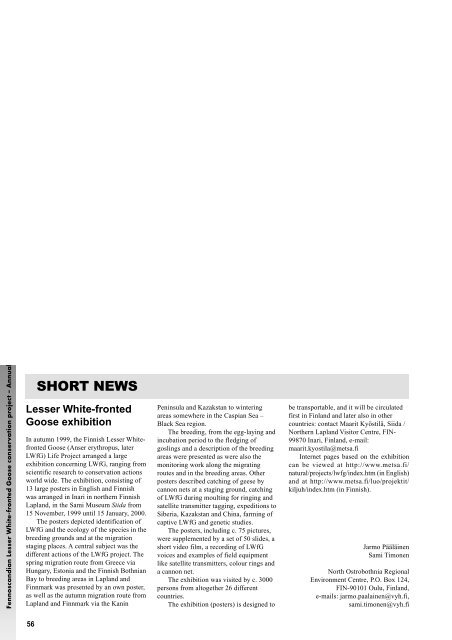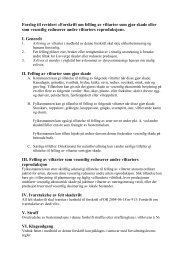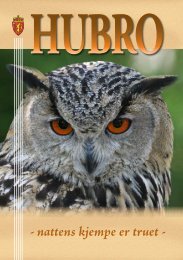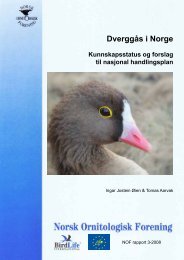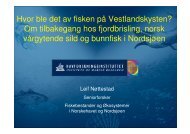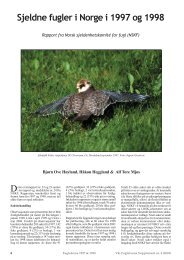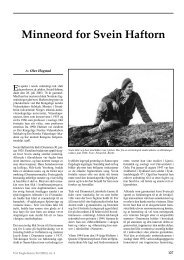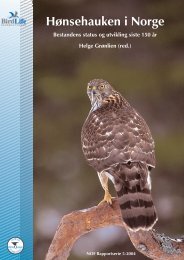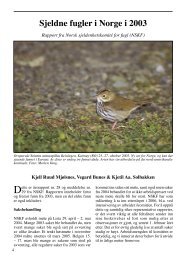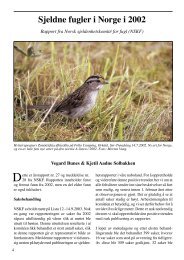Fennoscandian Lesser White-fronted Goose conservation project ...
Fennoscandian Lesser White-fronted Goose conservation project ...
Fennoscandian Lesser White-fronted Goose conservation project ...
Create successful ePaper yourself
Turn your PDF publications into a flip-book with our unique Google optimized e-Paper software.
<strong>Fennoscandian</strong> <strong>Lesser</strong> <strong>White</strong>-<strong>fronted</strong> <strong>Goose</strong> <strong>conservation</strong> <strong>project</strong> – Annual<br />
<strong>Lesser</strong> <strong>White</strong>-<strong>fronted</strong><br />
<strong>Goose</strong> exhibition<br />
In autumn 1999, the Finnish <strong>Lesser</strong> <strong>White</strong><strong>fronted</strong><br />
<strong>Goose</strong> (Anser erythropus, later<br />
LWfG) Life Project arranged a large<br />
exhibition concerning LWfG, ranging from<br />
scientific research to <strong>conservation</strong> actions<br />
world wide. The exhibition, consisting of<br />
13 large posters in English and Finnish<br />
was arranged in Inari in northern Finnish<br />
Lapland, in the Sami Museum Siida from<br />
15 November, 1999 until 15 January, 2000.<br />
The posters depicted identification of<br />
LWfG and the ecology of the species in the<br />
breeding grounds and at the migration<br />
staging places. A central subject was the<br />
different actions of the LWfG <strong>project</strong>. The<br />
spring migration route from Greece via<br />
Hungary, Estonia and the Finnish Bothnian<br />
Bay to breeding areas in Lapland and<br />
Finnmark was presented by an own poster,<br />
as well as the autumn migration route from<br />
Lapland and Finnmark via the Kanin<br />
56<br />
SHORT NEWS<br />
Peninsula and Kazakstan to wintering<br />
areas somewhere in the Caspian Sea –<br />
Black Sea region.<br />
The breeding, from the egg-laying and<br />
incubation period to the fledging of<br />
goslings and a description of the breeding<br />
areas were presented as were also the<br />
monitoring work along the migrating<br />
routes and in the breeding areas. Other<br />
posters described catching of geese by<br />
cannon nets at a staging ground, catching<br />
of LWfG during moulting for ringing and<br />
satellite transmitter tagging, expeditions to<br />
Siberia, Kazakstan and China, farming of<br />
captive LWfG and genetic studies.<br />
The posters, including c. 75 pictures,<br />
were supplemented by a set of 50 slides, a<br />
short video film, a recording of LWfG<br />
voices and examples of field equipment<br />
like satellite transmitters, colour rings and<br />
a cannon net.<br />
The exhibition was visited by c. 3000<br />
persons from altogether 26 different<br />
countries.<br />
The exhibition (posters) is designed to<br />
be transportable, and it will be circulated<br />
first in Finland and later also in other<br />
countries: contact Maarit Kyöstilä, Siida /<br />
Northern Lapland Visitor Centre, FIN-<br />
99870 Inari, Finland, e-mail:<br />
maarit.kyostila@metsa.fi<br />
Internet pages based on the exhibition<br />
can be viewed at http://www.metsa.fi/<br />
natural/<strong>project</strong>s/lwfg/index.htm (in English)<br />
and at http://www.metsa.fi/luo/projektit/<br />
kiljuh/index.htm (in Finnish).<br />
Jarmo Pääläinen<br />
Sami Timonen<br />
North Ostrobothnia Regional<br />
Environment Centre, P.O. Box 124,<br />
FIN-90101 Oulu, Finland,<br />
e-mails: jarmo.paalainen@vyh.fi,<br />
sami.timonen@vyh.fi


